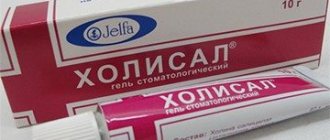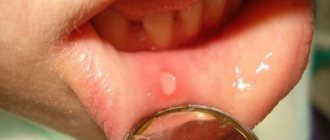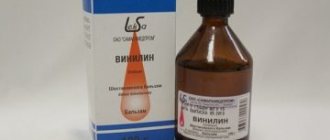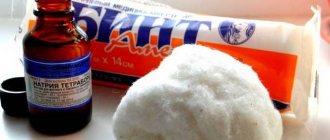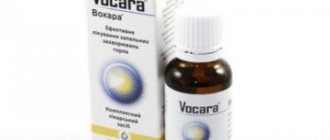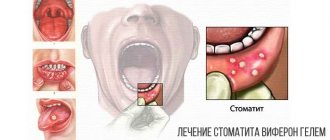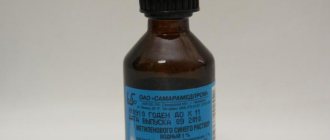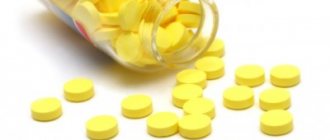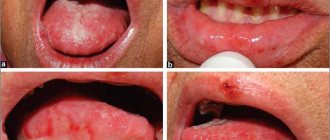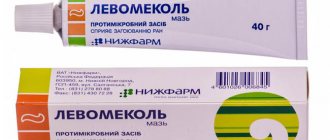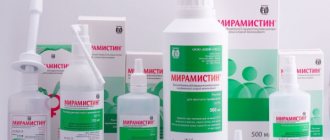Rinsing with medicinal solutions
An effective method of rinsing is the use of medications prescribed by the dentist.
Chlorhexidine
A 0.05% aqueous solution of chlorhexidine is used to rinse the mouth.
Directions for use: take 1 tablespoon of the product into your mouth, rinse for 1 minute 2 times a day (preferably morning and evening), about one hour before brushing your teeth.
Treatment time is no more than 10 - 12 days. The medicine is not diluted. You need to rinse continuously for a minute.
An excellent remedy that has high antimicrobial activity and copes well with painful sensations.
Miramistin
In dentistry, a 0.01% solution of miramistin is used for external use. The drug in this concentration is irrigated into the oral cavity 3-4 times a day. In this case, you should refrain from drinking and eating for 2 hours.
Important! The course of therapy is no more than seven days, continuation is only as prescribed by a doctor. Miramistin is an effective antiseptic that reduces the number of microorganisms and completely relieves inflammation, and therefore will help with pain
Miramistin is an effective antiseptic that reduces the number of microorganisms and completely relieves inflammation, and therefore will help with pain.
When can you rinse with Novocaine?
For pain relief, a medicinal solution is used with a percentage of anesthetic from 0.25% to 2% in ampoules or bottles.
To prepare a rinse solution you need to take 200 ml of novocaine, the white of one egg, 1 teaspoon of salt. Mix everything. The resulting mixture must be kept in the mouth, in the place of discomfort. Repeat several times until the pain goes away.
Important! Under no circumstances should you swallow the solution. Novocaine has a weak analgesic effect
It has a slight effect on inflammatory processes in tissues. Very toxic and causes allergies
Novocaine has a weak analgesic effect. It has a slight effect on inflammatory processes in tissues. Very toxic and causes allergies.
Stomatophyte
Stomatophyte is an anti-inflammatory agent, a liquid extract consisting of 7 different medicinal plants.
Photo 1. The drug Stomatofit in a 50 ml bottle is an anti-inflammatory agent for the oral cavity, consisting of seven medicinal plants.
The rinse solution is prepared as follows: 7.5 ml of extract is diluted in 1/4 cup of warm water. The procedure is carried out several times. The course of treatment is about two weeks. Repeated treatment is possible only as prescribed by the dentist.
Stomatophyte is a good medicine, but its anti-inflammatory effect is insignificant, so the relief of pain is weak.
Rotokan
Rotokan is an alcohol tincture consisting of medicinal plants: calendula, chamomile and yarrow.
In dentistry it is used as follows: dissolve a teaspoon (5 ml) of extract in 1 glass (200 ml) of warm water. Rinse for 2 - 3 minutes, several times a day. The course of treatment is from 2 to 5 days.
Important! Do not use alcohol tincture undiluted. Rotocan is quite suitable for pain relief and disinfection
Rotokan is quite suitable for pain relief and disinfection.
How to take other medications: Furacilin, Chlorophyllipit
Furacilin is a ready-made solution for rinsing based on sodium chloride, the concentration of which is 0.002%.
Use the product up to 5 times a day. Hold in mouth for 2 - 3 minutes, then spit out. The composition can be used for up to 10 days.
Before starting the procedure, you should rinse your mouth with soda solution to achieve the best effect.
Furacilin is an excellent antiseptic with a slight analgesic effect.
Chlorophyllipt is an antimicrobial agent based on natural eucalyptus.
A diluted alcohol solution is usually used to irrigate the oral cavity. The product is not used in its pure form, since there is a risk of burns on the mucous membrane.
Important! The drug should be taken with great caution, as its action causes an allergic reaction. Chlorophyllipt has a mild effect on pain
Chlorophyllipt has a mild effect on pain.
Analogues of Chlorophyllipt for the treatment of stomatitis
For stomatitis, rinsing not only removes bacterial plaque, but also anesthetizes and soothes the tissue. In addition to pharmaceutical products, you can use self-prepared solutions and decoctions.
How to rinse your mouth for stomatitis
- Chlorhexidine. Most often, doctors prescribe this particular antiseptic when ulcers occur in the mouth. It completely destroys bacteria and effectively moisturizes tissues. The drug relieves pain already on the second or third days of use.
- Furacilin. This drug has a pronounced antibacterial effect. To prepare the mixture, you need to dissolve 2-3 tablets of furatsilin in warm water.
- Rotokan. A herbal-based product that gives an antiseptic, anti-inflammatory and hemastatic effect. Rotokan includes extracts of chamomile, calendula and yarrow, so it can be used even for aphthous stomatitis. It’s easy to prepare a rinse solution: dissolve a teaspoon of the product in a glass of water.
- Miramistin. The drug is recommended for the treatment of candidal stomatitis. Miramistin effectively fights various microorganisms and has an antiseptic and antibacterial effect. Recommended for rinsing the mouth 3-4 times a day.
- Hydrogen peroxide. A solution with this substance will be useful for candidiasis, aphthous and herpetic stomatitis. Take a tablespoon of peroxide per 100 ml of water and rinse twice a day.
Advanced forms of stomatitis are treated with strong antifungal drugs and antibiotics. During this period, a systemic effect on the body is required. For these purposes, Amoxiclav or Sumamed, as well as anti-inflammatory drugs Imudon and Biseptol, can be prescribed.
Tablets for stomatitis
- Fluconazole. Effective for candidal stomatitis, but can be prescribed for any other form. Dosage: 100 mg per day for 1-2 weeks.
- Streptocide. The tablets are used as lotions: ground into powder and applied to the affected areas.
- Lysobacter. The product has a local antiseptic and antimicrobial effect. Can be used by children over three years of age.
Sprays and ointments for stomatitis
Sprays for stomatitis are needed to quickly relieve pain in the affected areas. With direct treatment, the medicine is absorbed into the mucous membrane and causes relief.
- Inhalipt. A product with a pronounced anti-inflammatory and disinfecting effect. Ingalipt is prescribed for various forms of stomatitis to treat ulcers 3-4 times a day. The course of treatment is 7 days.
- Bioparox. The drug is widely used in dentistry and otolaryngology, as it gives a rapid anti-inflammatory and bacteriostatic effect. This is due to the presence of the antibiotic fusafungin in the composition.
- Ambassador Prescribed for aphthous, ulcerative and catarrhal stomatitis. Thanks to propolis, ethyl alcohol and glycerin in the composition, it has an antimicrobial and anti-inflammatory effect.
To treat stomatitis ulcers you can use:
- Oxolinic ointment.
- Acyclovir.
- Nystatin ointment.
- Kamistad gel.
Self-medication of stomatitis is dangerous because today there is no one drug that would effectively relieve a person from different types of disease. Universal remedies designed to relieve symptoms should also be prescribed by a specialist.
Contraindications
Chlorophyllipt in any form must be used very carefully: eucalyptus extract often provokes allergies in the form of rashes, painful itching and severe swelling. In individual cases, symptoms spread to the skin of the face or other parts of the body. If the patient notices such a reaction, the gums should be shown to the dentist.
It is strictly not recommended to be treated with the drug for people who:
- have chronic gastritis;
- suffer from atrophy of the mucous membranes in the mouth;
- have dry gums due to diabetes and other hormonal diseases.
In this case, it is better to replace Chlorophyllipt with one of the similar herbal preparations: Rotokan, Stomatophyte or Chlorophyllin. Good antiseptics for eliminating inflammation are Miramistin, Hexoral, Chlorhexidine.
Complications of stomatitis
If the patient ignores the symptoms of stomatitis or the prescribed treatment turns out to be incorrect, the consequences of the disease can be dire. Often, ulcers disappear on their own after a few weeks, but pockets of infection remain, provoking a relapse. Over time, stomatitis will become chronic and will recur so often that the ulcers will not have time to heal.
The chronic form of the disease often turns into aphthous stomatitis, which affects a large surface of the oral mucosa. The pathology is often accompanied by bleeding gums, weakening and loss of teeth, and secondary infection. The patient's voice may change and laryngitis may develop. When an infection or fungus enters the bloodstream, it spreads throughout the body, affecting other parts of the body.
Four remedies for toothache
Painkillers
For severe toothache, painkillers that you can purchase at the pharmacy will help you most effectively. Try Ketanov, which you should take one tablet twice a day. This remedy relieves discomfort for approximately six hours - enough time to visit the dentist. You can also use tempalgin, baralgin, nurofen, dexalgin. Analgin, which is available in almost every home medicine cabinet, will not be able to relieve intense pain, but it will be quite effective for mild toothache. If you are taking any medications, be sure to ask your pharmacist about their compatibility with your pain reliever.
Clove oil
Clove oil has been used for many years to self-treat toothache. However, it is used not only in folk medicine. Dentists also use this product when filling tooth root canals and in linings for tooth decay.
Clove oil helps reduce the intensity of discomfort associated with toothache, periodontal disease, pulpitis, and stomatitis. To use this remedy, soak a cotton swab in the oil and apply it to the sore spot. You can also place a few drops of clove oil directly on the sore tooth.
Alcohol
At the dental clinic, the doctor will probably give you an anesthetic injection, but until that time you will have to make do on your own and use local anesthesia. Alcoholic drinks can also be used as a remedy for toothache. Take a large sip of vodka, whiskey or strong wine and hold the drink directly over the sore tooth. Your gums will absorb the alcohol, causing the tooth to become numb and hurt less. You can spit out the alcohol after this.
Rinsing
Rinse is good for relieving toothache. You will feel relief by rinsing your mouth with plain water, but you can prepare much more intense solutions. It is good to use sage decoction, water with a teaspoon of salt dissolved in it or twenty drops of chlorophyllipt per glass, water with a spoonful of baking soda and two drops of iodine (this remedy will not only relieve pain, but also disinfect the oral cavity).
www.kakprosto.ru
Release form
Alcohol solution
Chlorophyllipt solution prepared with alcohol is often used to treat stomatitis. It is prescribed for oral baths in cases of pathology caused by streptococci and staphylococci. Chlorophyllipt allows you to stop pathogenic microflora from the oral mucosa, and it also disinfects the tonsils.
Chlorophyllipt with alcohol is prescribed to patients over 12 years of age. The danger of the drug is that it contains plant components that can cause the development of allergies. Infants can be prescribed alcohol tincture only after passing appropriate tests.
Chlorophyllipt alcohol solution
But it is not recommended for adults to use the alcohol solution in its pure form. An increased concentration of the drug can injure the inflamed mucosa and aggravate the symptoms of the pathology.
To dilute Chlorophyllipt, you can use novocaine, an analgesic. It relieves pain and disinfects the affected mucous membrane. When treating stomatitis, Chlorophyllipt and novocaine 0.25% (1:5) are used. This composition significantly speeds up the healing process.
Spray
The drug in the form of a spray is in great demand today. And this is due to ease of use. You can always take this medicine with you. But the spray, like the alcohol solution, is not completely safe. When irrigating the mucous membrane, a severe allergic reaction regarding the respiratory system may occur.
The spray is prescribed only to adults, as children may develop laryngospasm when spraying substances in the mouth. Chlorophyllipt in the form of a spray is effective in the treatment of stomatitis in cases where the infectious process is concentrated on the tonsils and throat. Before use, be sure to check the reaction to the drug. It is not recommended to use the spray too often, as it greatly dries out the oral mucosa.
Chlorophyllipt spray
Oil solution
This form of Chlorophyllipt is used for local treatment of stomatitis ulcers and for internal use.
The oil solution is characterized by a pronounced antimicrobial effect. It contains olive and vegetable oil, as well as 2% eucalyptus leaf extract. An oil solution of Chlorophyllipt is used in cases where it is impossible to rinse the mouth with an alcohol tincture. Carry out the treatment 5 times a day. The solution should not be stored in the refrigerator or in a place that is too bright.
Lozenges
In terms of the effect they have, Chlorophyllipt in tablets is similar to an alcohol solution, only in terms of use they are more convenient. Take them only after meals. The tablets should not be used for a long time, as they lead to irritation.
Chlorophyllipt tablets
Does it help with stomatitis?
Chlorophyllipt has a pronounced antiseptic and bactericidal effect. Thanks to these properties and a completely natural composition (an organic mixture of eucalyptus chlorophylls), the drug promotes rapid healing of affected skin areas, improves local immune defense of tissues, and increases the degree of saturation of cells with oxygen and nutrients.
Chlorophyllipt oil solution
All this makes the medicine very popular in ENT practice. It is prescribed for sore throat, laryngitis, stomatitis, burns of mucous membranes, as well as other similar diseases and conditions.
Chlorophyllipt has proven its effectiveness when used in both adults and children.
How to prepare a treatment solution
The drug is used according to the instructions
If you have gum disease or after installing an implant, it is recommended to rinse your mouth with antiseptics. Chlorophyllipt for gums in this situation will quickly improve the condition of the microflora, relieve inflammation and reduce burning. Due to its alcohol content, it is used in adults and adolescents over 12 years of age. Dilute the product in a certain proportion:
- 1 tablespoon per 1 glass of water for gingivitis or accumulation of pus in the periodontium. Rinsing is carried out 3-4 times during the day. After the procedure, you should not eat or drink for at least 30 minutes.
- 1 teaspoon per 200-250 ml of warm water after installing the prosthesis. The gums are treated every morning and at night. For removable structures, they can be left in the solution for 1 hour.
- A proportion of 1 to 4 for oil Chlorophyllipt is used when wiping the mucous membrane during inflammation. This composition is indispensable for lotions if the dentist opened a purulent fistula or placed sutures near the tooth.
For preventive use and for fresh breath, it is enough to dilute Chlorophyllipt in a consistency of 1 teaspoon per cup of clean water. Rinse your mouth immediately after brushing your teeth, trying to hold each sip for 30 seconds.
Scheme and nuances of application
To treat inflammation of the oral mucosa, tonsils, and also for sore throat, an alcohol form of the drug is prescribed.
To rinse the mouth and throat, use a 1% alcohol solution of Chlorophyllipt, but it should be noted that there is a danger of burning the mucous membrane with undiluted solution.
Therefore, it is recommended to follow a few simple rules for use:
- one serving consists of 1 teaspoon of medicine and half a glass of warm boiled water;
- The product should be prepared immediately before use to preserve all antiseptic properties;
- per day, carry out four to six rinses for five minutes each, you can alternate with soda or furatsilin;
- It is forbidden to swallow the prepared medicine;
- after rinsing, do not drink or eat anything for half an hour;
- the course of use of the product consists of ten days.
Treatment of stomatitis
Chlorophyllipt for the treatment of stomatitis can be used in different forms and in different ways:
- Spray. In this form the medicine is very convenient. You can always have it with you and carry it in your bag. The spray is used to irrigate the mucous membrane. At least five procedures are required per day. Before using the medicine, it is recommended to brush your teeth or at least rinse your mouth with clean water.
- The tablets are excellent for treating stomatitis in children. Young patients cannot yet rinse their mouths properly. Taking tablets involves dissolving them, which children can cope with. You need to take the medicine four times a day.
- An alcohol solution is used to rinse the mouth. You will need to dilute 25 drops of the drug in one glass of warm boiled water. Rinse after meals at least four times a day.
- Chlorophyllipt oil solution is used to lubricate ulcers. The treatment should be carried out pointwise, carefully lubricating each damage to the mucosa. Before the procedure, you need to brush your teeth and rinse your mouth. Using cotton swabs soaked in the solution, treat all sores. Repeat the procedure four times a day.
If the patient is not allergic to the components of the drug, then several forms of the drug can be used in the treatment of stomatitis. For example, rinse your mouth with a solution after eating, and take lozenges throughout the day.
The medicine in the form of an alcohol solution is also recommended for sanitation of the oral cavity. You will need a cotton swab soaked in the prepared solution. It is used to treat the mucous membrane.
In the treatment of periodontal disease, an oil form of the medicine is used, which must be used to carefully treat the gums. The course of treatment must consist of at least five full days.
Other methods of using the drug:
Reviews and analogues
According to reviews from parents, Chlorophyllipt is a highly effective drug that helps not only with stomatitis, but also with sore throat, various skin lesions and many other problems.
As a rule, wounds and ulcers in the mouth completely disappear in just 3-4 days, which indicates a rapid onset of positive effects from treatment. The downside, according to reviews, is the pronounced taste and smell of eucalyptus, which sometimes children do not like. Analogues:
- Miramistin . An effective drug with a pronounced antiseptic and bactericidal effect. This product does not have a pronounced taste and smell, like Chlorophyllipt, however, and it costs several times more than the latter;
- Inhalipt . Another safe and proven medicine with virtually no contraindications;
- Chlorhexidine . This external antiseptic can also be used to rinse your mouth for stomatitis. Efficiency is high, and pain is relieved already on the second day from the start of using the product;
- Rotokan is a rinse based exclusively on herbal and safe ingredients;
- Furacilin . Tablet for 100-150 ml of water, used for rinsing.
You should consult your doctor about the advisability of using a particular remedy.
Source: momjournal.ru
Use for adults
Chlorophyllipt alcohol solution 1%
To treat inflammation of the oral mucosa with stomatitis in adults, Chlorophyllipt, an alcohol solution, is used. They are first rinsed and then the pathological area is treated with a moistened cotton swab. Under no circumstances should the medicine be applied in its pure form; it must be diluted as stated above. The duration of therapy lasts from three to five days, subject to all principles of proper processing. Often treatment does not produce results. In this case, it is necessary to contact a specialist in order to adjust the therapy and choose another remedy.
The drug is prescribed to children who are already quite old, starting from 12 years of age.
The drug is prescribed to young children with extreme caution. The danger of the medicine lies in its composition, since natural ingredients can cause allergies
Infants are treated with chlorophyllipt only after trials.
Treatment of stomatitis in children
There are several methods for treating stomatitis in a child using Chlorophyllipt. A convenient aerosol is prescribed in cases where the disease manifests itself unexpectedly. By irrigating the mucous membrane several times a day, even a small child (from 4 years old) can treat stomatitis.
Chlorophyllipt tablets are necessary for children who are not yet able to use a spray or rinse their mouth. It is recommended to dissolve the capsules after eating in case of inflammation of the mucous membrane.
An alcohol tincture of Chlorophyllipt is also prescribed for rinsing with stomatitis. Take 20 drops of the drug per glass of warm water.
Adults should supervise the rinsing process, as a child may swallow the liquid or choke due to carelessness. You can repeat the procedure several times a day after meals.
Oily Chlorophyllipt is used for spot treatment of ulcers due to stomatitis. Before the procedure, the child must brush his teeth and rinse his mouth. You need to lubricate the pathological areas carefully, using a cotton swab soaked in the solution. The procedure must be repeated more than four times a day.
It is customary to sanitize the oral cavity in case of inflammation with an alcohol solution. Chlorophyllipt should be used with alcohol in the same way as similar rinses. You can also lubricate the mucous membrane with a cotton swab.
If the child tolerates treatment with Chlorophyllipt well, different forms of the drug can be combined within reasonable limits. Most often, doctors recommend rinsing your mouth after eating and using tablets the rest of the time.
The course of treatment of stomatitis in children with Chlorophyllipt is no more than three days. If symptoms do not subside, you should consult a specialist. It may be necessary to change the course or regimen of treatment, or medications.
Treatment of infants
Stomatitis often develops in children who do not know how to rinse their mouths on their own. To treat pathology in such patients, take Chlorophyllipt tincture (sprays also cannot be used if the child has not reached the age of three).
Doctors recommend treating stomatitis by taking the tincture drop by drop per year of the child’s life (if the baby is two years old, you should drink two drops). The required number of drops should be given to the baby three times a day for 30 days.
If the child knows how to rinse his mouth correctly and safely on his own, the tincture is not prescribed orally. But this is possible only at the age of three years.
How not to treat stomatitis in children
If symptoms of stomatitis occur, it is strictly forbidden to use brilliant green or fucorcin to treat ulcers. Children with damage to the oral mucosa should not consume honey due to its severe allergenicity. In addition, beekeeping products contribute to the formation of an environment favorable for the proliferation of staphylococci, which will only intensify the symptoms of stomatitis.
If you use honey, you can aggravate the inflammation of the mucous membrane. Patients who are treated with alcohol tinctures will suffer burns and deterioration of their condition.
The success of therapy for stomatitis in children depends on a complete diagnosis and comprehensive treatment. Parents are required to follow all recommendations of specialists and take care when treating ulcers in the child’s mouth.
Features of stomatitis
Stomatitis is the most common lesion of the oral mucosa. There are many causes of pathology, including injuries, stress, poor-quality oral hygiene products, lack of vitamins in the diet, allergies, endocrine disorders, bacteria and some diseases.
The mechanism of development of stomatitis has not yet been studied, but doctors associate inflammation of the mucous membrane with the immune response to certain irritants. It has been noted that stomatitis often develops when the immune system is unable to recognize molecules that have entered the body. The attack of lymphocytes on unidentified elements begins, which provokes the occurrence of ulcers in the oral cavity.
Symptoms of stomatitis:
- ulcers on the lips and cheeks, under the tongue, on the soft palate and tonsils;
- initially there is redness of the mucous membrane, swelling and burning;
- redness gives way to ulcers (shallow, round or oval, the presence of a white film, smooth edges and a reddish halo);
- soreness of ulcers;
- the development of the disease takes 4-14 days;
- frequent relapses;
- The first appearance of ulcers is at 10-20 years.
There are several types of stomatitis, which are determined by the type of irritant. Fungal stomatitis is caused by yeast-like fungi, and the disease often occurs in children. Herpetic stomatitis is caused by the herpes virus, and bacterial stomatitis is caused by an infection that occurs when the mucous membrane is injured. Allergic stomatitis is considered to be a manifestation of allergies, and not a separate disease. There are also erosive-ulcerative and catarrhal-hemorrhagic types of the disease.
The treatment of stomatitis must be approached responsibly. The disease can be cured completely only if all the doctor’s recommendations are followed and a set of measures is applied. This is due to the fact that the disease often causes complications during the period when visible signs disappear.
Efficacy of the drug
The drug is actively used for the prevention and treatment of tonsillitis. This is due to a number of useful properties. Chlorophyllipt has the following types of effects:
- bactericidal – copes with bacterial microorganisms;
- anti-inflammatory;
- bacteriostatic – stops the development of bacteria;
- antipyogenic – reduces the synthesis of purulent discharge and mucus;
- antihypoxic – increases the oxygen content in the blood;
- immunostimulating;
- regenerating – restores tonsil tissue.
The drug has many advantages:
- It has a strong antiseptic effect and copes well with inflammation.
- Successfully copes with pathogenic microflora. The product is especially effective against Staphylococcus aureus and strains of antibiotic-resistant bacteria;
- Thanks to the presence of eucalyptus in the composition, it perfectly reduces the severity of pain and eliminates mucous and purulent discharge.
- Does not contain artificial components, has a natural composition.
- It has a low cost compared to other similar drugs that are used to treat tonsillitis and other throat pathologies.
- It has many forms of release, which allows you to choose the best option for adults and children.
- Helps cope with the symptoms of tonsillitis, rhinitis, laryngitis. The drug effectively eliminates sore throat, purulent plugs, and swelling of the respiratory system.
The effectiveness of Chlorophyllipt
Chlorophyllipt is one of the few pharmacological agents that are produced from natural ingredients. The basis of the drug is eucalyptus and myrtle. Chlorophyllipt is available in the form of capsules, alcohol and oil solutions, and spray. The product has a pine aroma and a bright green tint.
Chlorophyllipt is widely used in the treatment of ENT diseases and dental pathologies (stomatitis, gingivitis, oral diseases, etc.). Sometimes the medicine is used to treat non-healing wounds, as it has antiseptic properties.
For stomatitis, Chlorophyllipt is effective due to its strong bactericidal effect. The drug promotes tissue healing and overall strengthening of the immune system. Chlorophyllipt can be prescribed orally, for injections and compresses.
Spray
Medicines in spray form are incredibly popular today due to their practicality. You can take the spray can on the go and treat the oral cavity at any time. However, do not be deceived by advertising and the superior safety of this form of the drug. If you are intolerant to Chlorophyllipt, irrigation of the mucous membrane with a spray can cause a severe allergic reaction from the respiratory system.
Sprays are prescribed exclusively to adults, since children often develop laryngospasm when substances are sprayed in the mouth. For stomatitis, only a doctor can include Chlorophyllipt in the course of treatment. This is due not so much to the possible danger as to the need to find out the cause of the disease and choose appropriate remedies.
Use of Chlorophyllipt in dentistry
The medicine is actively used in surgery and gynecology, it eliminates diseases of the throat and nasopharynx. Dentists often recommend Chlorophyllipt for gums in situations that require keeping the mouth clean. This is an excellent composition for rinsing teeth in the following situations:
- gingivitis;
- ulcers due to stomatitis;
- inflammation in the intergingival spaces;
- performing dental surgery on the mucous membrane;
- installation of a prosthesis or screwing in an implant;
- inflammation after infection with staphylococcus.
- Hypertrophic gingivitis photo
- Hypertrophic gingivitis
- Herpetic stomatitis
- Allergic stomatitis in adults
- Herpetic stomatitis
- Allergic stomatitis photo
- Gingivitis photo
- Initial stage of gingivitis
As a prophylactic agent, Chlorophyllipt solution is used by patients whose immune system has failed after suffering from acute respiratory viral infections, laryngitis, tonsillitis or bacterial bronchitis. The drug helps prevent complications for people after chemotherapy or long-term antibiotic treatment.
Advantages of the drug
This is an affordable remedy that is not only inexpensive, but also available without a prescription. It effectively fights various inflammations of the mouth and throat.
The drug has few contraindications (however, prior consultation with a doctor is advisable, and during pregnancy, mandatory). The product allows you to quickly overcome a number of oral problems that would have been long and painful without the use of the drug.
The product belongs to antimicrobial drugs of plant origin. It has bactericidal, bacteriostatic and anti-inflammatory effects. It especially helps against staphylococci, including those strains of these microorganisms that are resistant to antibiotics.
How to use it correctly
The drug comes with detailed instructions that describe the algorithm from start to finish. First, get acquainted with the contraindications. They consist of hypersensitivity to components, including: eucalyptus leaf extract and sunflower oil.
According to the instructions for use, an allergic reaction is possible after using the medicine. If this happens, swelling of the larynx and difficulty breathing are possible, which is critical. That’s why it’s worth doing a test first.
To do this, take five drops per tablespoon of water. Dissolve. Rinse your mouth. Spit it out. Then they don’t eat or drink for half an hour. If there is a burning sensation, itching, redness of the mucous membrane and similar manifestations of allergies, take antihistamine tablets. It is clear that in this situation further use is unacceptable.
Local use. Rinse your mouth after eating. When rinsing the gums is finished, the drug must be spat out. The result will be if you rinse at least twice a day, but at the same time, you should not overuse it. It is not recommended to rinse more than four times a day.
There is a good reason why excessive rinsing with an alcohol solution of Chlorophyllipt is not advisable for gums. The point here is that such solutions, when abused, lead to dryness and thinning of the mucous membrane, which ultimately increases inflammation of the gums.
In addition, the solution will not help in every situation, since it is a relatively weak antiseptic. That is why in other cases it is better to consult a doctor. But there is also an oil solution and spray, which are also suitable for combating problems of the oral cavity, in particular for treating ulcers.
After tooth extraction
At the end of this operation, the mouth is disinfected. An alcohol solution is again suitable for these purposes. Dentists note that the product satisfactorily copes with sanitation.
Chlorophyllipt for rinsing the mouth after tooth extraction is a good solution to prevent infection of a vulnerable area after such a strong intervention in the body.
Allergy test before using chlorophyllipt
Since chlorophyllipt is a herbal product, an allergy test should be performed before using it for the first time. In some people, the drug causes severe allergies, which after rinsing can cause swelling of the larynx with serious difficulty breathing. In order to carry out the test, you need to add 5 drops of the drug to 1 tablespoon of boiled water and rinse your mouth with the resulting solution. Next, after spitting out the composition, refrain from drinking and eating for 30 minutes. The presence of an allergic reaction will be indicated by the following signs occurring during this period of time:
- redness of the mucous membrane;
- itching;
- burning;
- rashes on the mucous membrane;
- swelling of the mucous membrane;
- swelling of the face.
How to dilute as a mouth rinse for stomatitis?
You can use an alcohol solution of Chlorophyllipt for rinsing, however, not all experts recommend using it. The fact is that the product must be diluted with water; the concentration of the active substance decreases, which leads to a decrease in the antimicrobial effect. The presence of alcohol in the drug can have a detrimental effect on the mucous membranes of the oral cavity. Moreover, alcohol is able to dilate blood vessels, facilitating deeper penetration of the infection.
If you use Chlorophyllipt for a long period of time, you can provoke an increase in the inflammatory process of the gums. Motorists should completely refrain from rinsing with an alcohol solution!
For children
The product is not recommended for use before the age of 12, but can be used earlier - only according to the indications of a pediatrician. If there is an inflammatory process in the mouth of an infant, Chlorophyllipt in the form of oil is applied pointwise to the affected areas (using a cotton swab). A few drops of the alcohol form of the drug (1%), which is diluted in a glass of boiled water (breast milk or formula) at the rate of 1 drop = 1 year of life, can help cope with infection in children.
Older children already know how to rinse their mouths, so they can use an alcohol solution diluted in water to irrigate the mouth. Having diluted Chlorophyllipt at the rate of 1 tbsp. spoon in a glass of water, the child needs to rinse his mouth under the supervision of elders. The procedure should be carried out three times a day, each time using a fresh solution. Chlorophyllipt will relieve children from unpleasant sensations in the mouth and will have a mild antiseptic effect and relieve inflammation of the gums.
To achieve the desired effect, you need to rinse your mouth and adhere to the following recommendations:
- the child should take about half a sip into his mouth;
- tilting your head back, inhale through your nose;
- open the mouth slightly;
- pronounce a long vowel sound “a” (5-7 seconds is enough);
- spit out the solution, then repeat the procedure 10 more times.
For adults
In adults, the rinsing process is similar, only the solution must be prepared in a larger volume (250 ml) (for more details, see the article: rinsing the mouth for stomatitis in adults). It is necessary to use only a fresh solution, rinsing it completely, since during storage the healing properties of Chlorophyllipt dissolved in water fade away. When treating stomatitis, rinsing should be done for 10 minutes. after 30 minutes after eating. During the procedure, you cannot swallow the solution, and eating is possible only after an hour. Chlorophyllipt for stomatitis, according to the instructions for use, is used 4 times a day.
In cases of purulent inflammation of the throat, in particular sore throat, the concentration can be increased from 5 ml. up to 10 ml. alcohol solution per 250 ml. liquids. For sore throat, the number of rinses increases to 7 times a day.
How to use Chlorophyllipt for stomatitis
This disease has the following symptoms: painful ulcers appear on the gums and inside the cheeks. Small blisters contain inflammatory fluid and are unbearably itchy and disturbing. They make eating difficult and interfere with brushing your teeth and talking. When they mature and break through, they leave oozing sores. In addition to taking anti-inflammatory drugs, dentists recommend treating them with antiseptics.
It is better to use oil-based chlorophyllipt for gums for stomatitis. It is not diluted with water, but applied to each ulcer using a cotton swab. The wound will be well disinfected and will stop secreting pus. First you should brush your teeth and rinse the cavity generously with cool water. Such treatment must be carried out 2-3 times a day until positive dynamics occur.
The drug is rarely used to treat children under 12 years of age. In this case, the composition is diluted with clean water at the rate of 10–15 drops per glass of liquid. A sterile cotton-gauze swab is generously moistened with it and the plaque is carefully removed from the gums, and the baby’s palate and cheeks are wiped with it. The procedure is carried out only after the doctor's approval.
Side effects: monitor the reaction
Basically, side effects are associated with a local reaction of the oral mucosa and pharynx to the components of the alcohol solution. When used, the following may occur:
- general redness of the mucous membrane of the mouth and tongue;
- allergic pinpoint rashes on the inner surface of the cheeks, gums, and palate;
- burning, dry mouth.
Mostly, negative reactions are associated with an individual allergic reaction to the components of the drug. Also, unfavorable symptoms can be caused by improper preparation of the solution.
If signs of intolerance to the chlorophyllipt solution appear, it is necessary to discontinue the drug and consult a dentist or otolaryngologist for examination.
Rarely, systemic side effects may occur in the form of rashes on the face, body, swelling of the oral mucosa and larynx. If the solution is swallowed, intoxication, decreased concentration, difficulty concentrating, and slower reactions are possible, which is associated with the systemic effect of ethyl alcohol, which is a solvent for eucalyptus leaf extract.
Chlorophyllipt is a therapeutic and prophylactic product of plant origin, which, as an aqueous solution, can be used as a mouth rinse. The drug has the advantage of enhanced anti-inflammatory and antimicrobial action compared to industrially produced rinses sold by retail chains. When used correctly, the effect of use is observed on the 2-3rd day of use.
Contraindications and side effects
The drug is completely herbal, which means it is practically harmless. Only in extremely rare cases can negative reactions occur in the form of rash, itching, redness, swelling, etc. You can exclude them by first conducting an allergy test - drop a small amount of the product on the child’s wrist and wait a few hours.
If no reactions occur, the drug can be safely used for treatment.
In addition to individual intolerance to eucalyptus, contraindications for use are:
- increased function of the glands of the digestive system;
- atrophy of the mucous membranes of the upper respiratory tract.
How to breed it?
Only an alcohol solution needs to be diluted. To do this, use boiled water at room temperature. About the proportions - below.
Directions for use and dosage
Chlorophyllipt can be purchased at a pharmacy without a doctor's prescription and used at the first sign of stomatitis.
Attention! If after 3-4 days of using Chlorophyllipt there is no improvement, you should visit a doctor. Let's consider the features of using each of the release forms
Let's consider the features of using each of the release forms.
Oil solution
It is a dark green oily liquid. Has no age restrictions.
It is applied pointwise to ulcerative elements and wounds of the mucous membrane, avoiding undamaged areas.
The procedure is carried out 3-4 times a day after meals, after rinsing the mouth with warm boiled water. For application use gauze or a cotton swab.
Spray
For inflammatory processes occurring in the upper respiratory tract, as well as for the treatment of catarrhal stomatitis, the throat is sprayed with 2 pumps 4-5 times a day. Before doing this, it is recommended to brush your teeth or rinse your mouth with water.
The main advantage of the Chlorophyllipt spray is the convenience and possibility of treatment outside the home. The compact can easily fits into your pocket.
Infusion
An alcoholic infusion of Chlorophyllipt may be recommended for children over 12 years of age, as well as adults. Oral administration is prescribed in the presence of staphylococci in the intestines, as well as for prevention after surgery.
Treatment involves taking a solution diluted in water half an hour before meals, 3 times a day. The duration of the course is determined by the doctor, based on the severity of the condition and the individual characteristics of the body.
To treat bacterial stomatitis, rinse with infusion. To prepare it, add 25 drops to 250 ml of warm water. The procedure is carried out 3-4 times after meals. To eliminate staphylococci, enemas from Chlorophyllipt solution are used. To prepare it, you will need to mix 20 ml of 1% infusion and 1 liter of water. An enema is given once every 2 days with a course of treatment of 20 days.
Pills
The drug in tablets is not intended for swallowing or chewing. It can be used in the treatment of stomatitis in children under 6 years of age, when rinsing is not possible. One tablet is dissolved after meals every 5-6 hours. The duration of treatment can be 7-10 days.
For adults, such treatment is less effective due to the slow release of the active ingredients into the blood and their low content. Therefore, this form is often used for mixed therapy, combined with a spray or rinse solution.
Injection
Chlorophyllipt injections can be prescribed by a doctor for pneumonia, burns and other septic conditions. The intravenous injection is administered slowly. The injection solution is prepared immediately before administration by mixing 38 ml of a sterile solution with 2 ml of the injection form of Chlorophyllipt 0.2%. The drug is administered 4 times a day, 40 ml. The course of treatment is 5 days.
For infants, the injection solution is mixed in the proportion of 10 ml of sterile solution per 0.5 ml of the injection form of Chlorophyllipt 0.2%. The baby is given an injection twice a day and a few drops of an alcohol solution are added to the baby food.
